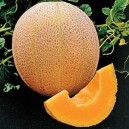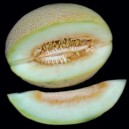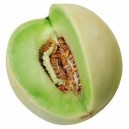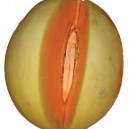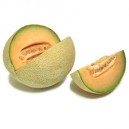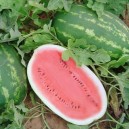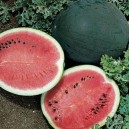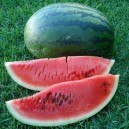
Welcome, Log in
Product Categories
-
Heirloom & OP Seed
- Cool Weather Crops
- Warm Weather Crops
- Beans
- Beetroot
- Brassicas
- Carrots
- Chard
- Corn/Maize
- Cucumbers
- Eggplant (Aubergine)
- Leeks
- Lettuce
- Melons
- Okra
- Onions
- Parsnips
- Peas
- Peppers & Chillies
- Radish
- Spinach
- Squash & Pumpkins
- Tomatoes
- Turnips
- Unusual / Exotic
- Herbs & Spices
- Fruits & Berries
- Value Packs
- View All Seed
- Gift Vouchers
MelonsThere are 8 products.
Please scroll down or click here to view the product list
GROWING INSTRUCTIONS FOR MELONS
Binomial Name: Cucumis Melo
Varieties: Banana Melon, Crenshaw, Hales Best, Honey Rock, Orange Flesh, Osage Muskmelon, Plum Granny, Rocky Ford, Tam Dew
Start: Seed or seedling
Germination: 3 - 5 days, 15°C to 35°C
Seed Life (viability): 4 years
Soil: High fertility
Sunlight: Full sun
Sow Seeds: 30cm apart
Transplant/Thin to: 120 - 180cm apart
Ave. Days to Harvest: 65 - 86
Good Companions: Petunia, radish, corn, yarrow
Bad Companions: -
Sowing & Planting: Prefers warm, well-drained soil, high in organic matter with a pH 6.5 to 7.5. Consistent and plentiful moisture is needed until fruit is about the size of a tennis ball. Soil temperatures below 10°C inhibit growth.
If you have a long, hot growing season then direct-seed into the garden. To ensure ripening in areas with shorter growing seasons and cooler weather, choose fast-maturing varieties, start plants inside, use black plastic mulch to warm the soil and use fabric row covers to protect plants.
Direct-seed 1 to 2 weeks after average last frost when soil is 20°C or warmer. Plant 1cm deep, 6 seeds per hill, hills 120 - 180cm apart; or 30cm apart in rows 150cm apart. Can plant at closer spacings if trellised. Thin to 2 to 3 plants per hill.
For transplanting, sow seeds indoors 5mm deep in pots (5cm square or bigger), 2 to 4 weeks before setting out. Plants should have one or two true leaves when transplanted. Transplant at same spacings as direct-seeded crops. Transplants are delicate and roots are sensitive to disturbance. If you need to thin, use scissors so as not to disturb the roots of remaining plants. Keep the soil intact around the plant when transplanting.
Growing: Mulch plants after soil has warmed to help maintain consistent moisture and suppress weeds. If using fabric row covers, remove them at flowering to allow pollination by bees. Good pollination is critical to fruit set.
Plants require consistent moisture until pollination. Once fruits are about the size of a tennis ball, only water if the soil is dry and leaves show signs of wilting. To prevent insect damage to developing fruits, place melons on pots or pieces of wood up off the soil.
If growing melons on a trellis, support fruit with slings made from netting, fabric, or pantyhose. Trellising improves air circulation around plants and can help reduce foliar disease problems. Choose small-fruited varieties and reduce plant spacing.
To reduce insect and disease problems, avoid planting cucumber family crops (melons, squash, pumpkins) in the same spot two years in a row.
Harvesting: Harvest muskmelon or cantaloupe when the stem pulls easily and cleanly from the fruit. If the stem has to be removed forcibly from the melon it is not fully mature. In addition, mature muskmelons have a distinct, musky aroma and the end opposite the stem should be slightly soft. Honeydew will not slip from the stem when ripe. Harvest honeydew melons when the end opposite the stem softens and the skin takes on a creamy yellow color.
-
R 25.00Out of Stock More Details
Coming Soon -
R 25.00Add to cart More Details
Available -
R 25.00Add to cart More Details
Available -
R 25.00Add to cart More Details
Available -
R 25.00Out of Stock More Details
Coming Soon -
R 25.00Add to cart More Details
Available -
R 25.00Out of Stock More Details
Coming Soon -
R 25.00Out of Stock More Details
Coming Soon
